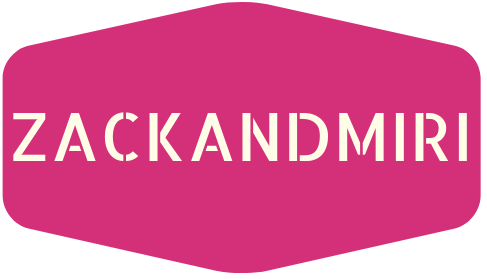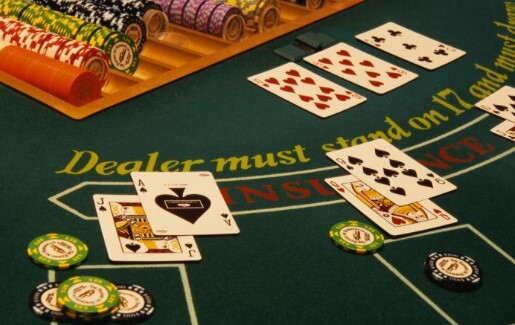The purpose of Blackjack card counting is to know if the shoe decks in the table contain cards that are beneficial to you, the participant, thereby understanding when to make a bigger bet.
Many casinos now use continuous shuffle machines (CSM’s), in which the cards are automatically shuffled after every hand. It’s not possible to count when these gadgets are utilized.
The film 21, Starring Kevin Spacey, dramatizes a true story about a group of six MIT students that defeat Vegas casinos for millions by mastering card counting techniques while playing Blackjack. It provides a reasonably good account of how the system operates. The film is based on the book, Bringing Down the House by Ben Mezrich.
The Objective of Card Counting
According to those above, the purpose is to understand if the decks include cards that are beneficial to you, the participant, thereby knowing when to make a bigger bet.
You’d do this by mentally assigning a point value to the cards being dealt and keeping track. Even if you’re math skills and can maintain a running count in mind, there’s still no guarantee. If the shoe is favorable, it might be the other players at the table or even the trader that is dealt with the better cards.
Unlike what most people today think, card counting isn’t illegal. However, if caught, you’ll be asked to leave the casino. Their personnel, advantaged from the eye in the sky view, pit bosses, flooring persons, and traders are all trained to spot counters.
Count Strategy
A simple strategy works like this: Assign the next point value for each card dealt: any 2 – 3 – 4 – 5 and 6 are (+1). 7, 8, 9, are considered neutral, and thus don’t count them. 10, J, Q, K, A, are (-1). Do psychological tabulation. If the count is +4 or higher, lower value (unfavorable) cards are dealt, and higher (festive) cards stay in the shoe. The opposite is valid once the count is below +4 or at the minus field. Mentally keep the accumulative running count after each hand until the next shuffle. This may sound simple, but the rapid pace can be perplexing. One mistake could blow off the count in the wrong direction. If you still think You Want to try your hand in restricting, here are some helpful hints:
First, learn a simple basic plan. Without it, counting is meaningless.
Practice. Practice. Practice. Try it in your home with several decks first. Try counting in groups of three or four cards each to represent players. Tabulate around 20 to 30 cards to simulate a complete table of seven players each round. Speed is important.
When you are ready, pick the ideal table. Start looking for the slowest dealer, a dining table with favorable rules, and a shoe game with the least number of decks. Sit down to buy in at a fresh shoe right after the shuffle. Note that some casinos don’t allow mid-shoe entry into a match.
The participant’s favorable rules are: Blackjack pays 3/2, split any pair, double down on any two cards, double after split allowed, and the dealer stands on all seventeen’s.
Do not get greedy. Maintain your bet spreads low, to a range of 5 times the table minimum. By way of instance, in a $10 table, never wager more than $50 on a positive count. If you keep jumping from $10 to $100, you’ll get caught.
Do not be obvious. If you try to behave like the World’s dumbest blackjack player when playing perfect basic strategy, you’ll get caught. Bear in mind, practice, scout, pick, play, and have fun.
Most blackjack games in casinos now offer a discretionary bonus or side bets. Once rare at a simple blackjack table, they are getting more and more prevalent. The rationale is simple since they carry a massive house edge. Anywhere from 3% to 20% or more when compared with the 0.5% advantage when playing straight up blackjack whilst using correct Basic Strategy. The larger the wedge, the more money the home makes.
The negative bets do have an upside for the participant in that winning bonus wagers will payout even if the player loses the first hand, and the big payouts are tempting. Should you care to venture in, here are some of the most popular ones:
Twenty-One + 3
This side bet comprises a little 3 Card Poker excitement to the mix in your first two cards, and the dealer’s upcard will be the determining factor. When you have made your BJ and optional Twenty-One + 3 wagers, By combining three cards of the same color, you create a straight flush, any straight or three of a kind. The bet wins 9 to 1 in a game of six or eight decks. The house edge is about 3 percent. The house edge is around 3 percent. when when you deal the first two cards, you get both of the same suits, you have a
Royal Match 21 cover 2.5 to 1
A satisfied King & Queen (Royal Match) pays 25 to 1
A participant Royal Match & trader Royal Match in any lawsuit pay 1000 to 1
The maximum wager allowed will vary between casinos. Together with the outcome based on your initial two cards, the house edge is about 6 percent.
Bet the Set 21
This side bet concentrates on your first two cards once you have made you are blackjack bet and a Bet the Set bet. In some jurisdictions, this wager is also referred to as Pair Square. If you are dealt any pair, You’re paid based on a pre-determined cover table based on the number of decks in play:
Single deck – set pays 15 to 1
Double deck – set pays 10 to 1; suited pair pays 25 to 1
Four, six, or eight decks – pair pays 10 to 1, and suited pair pays 15 to 1
With a good number of decks in play and the paytable that vary between authorities, the house edge varies between 5 & 6 percent.
Dealer Bust 21
A player wins if the dealer busts with various cards up a showing. The winning payouts are compensated in accordance with these numbers:
Bust with Ace up: Pays 10 to 1
Bust with 10 to K: Pays 4 to 1
Bust with 7 to 9: Pays 2 to 1
Bust with 2 to 6: Pays 1 to 1
10% is what the house has an advantage when the dealer stands on soft seventeen, about 8 percent if the trader hits on soft seventeen.
Over/Under 13
A player can bet on whether the total of his first two cards will be over or under, 13. A precise 13 total frequently loses, and Ace always counts as 1. Over 13 bet, the house edge: 6.5%, and for the Under 13, it is 10%. The side bet is generally offered on six- and eight-deck games.
Pair Square
A victory is possible when the player’s first two cards are the same rank (as a set of 8’s). An unmatched pair (such as an 8 of Clubs and an 8 of Hearts) pays 10 to 1. A matched pair (such as a set of 8 clubs) pays 15 to 1. The house edge is 10.6 %.
Super Sevens
Along with your blackjack game wager, bet $1 that you will be dealt from one to three sevens leading to the following payouts:
One seven pays 3 to 1
Two unsuited sevens cover 50 to 1
Two suited sevens cover 100 to 1
Three unsuited sevens cover 500 to 1
Three suited sevens cover 5000 to 1
The house edge is about 12% without a third card dealt about 11 percent when a third card is dealt with.
Lucky ladies
Here’s a wager where any hand totaling 20 wins something. If you are a player, and you have the possibility to have a pair of Queens, you’ll win more, as the following paytable reveals:
Pair of Queens: with a dealer Blackjack: pays 250 to 1
Pair of Queens: Pays 25 to 1
Any satisfied 20: pays 9 to 1
Any unsuited 20: pays 4 to 1
The house edge is between 17 & 20% based on the authority’s paytable.
Always bear in mind that your bankroll is at a higher risk of a faster depletion when playing blackjack matches and making these tempting side bets.


